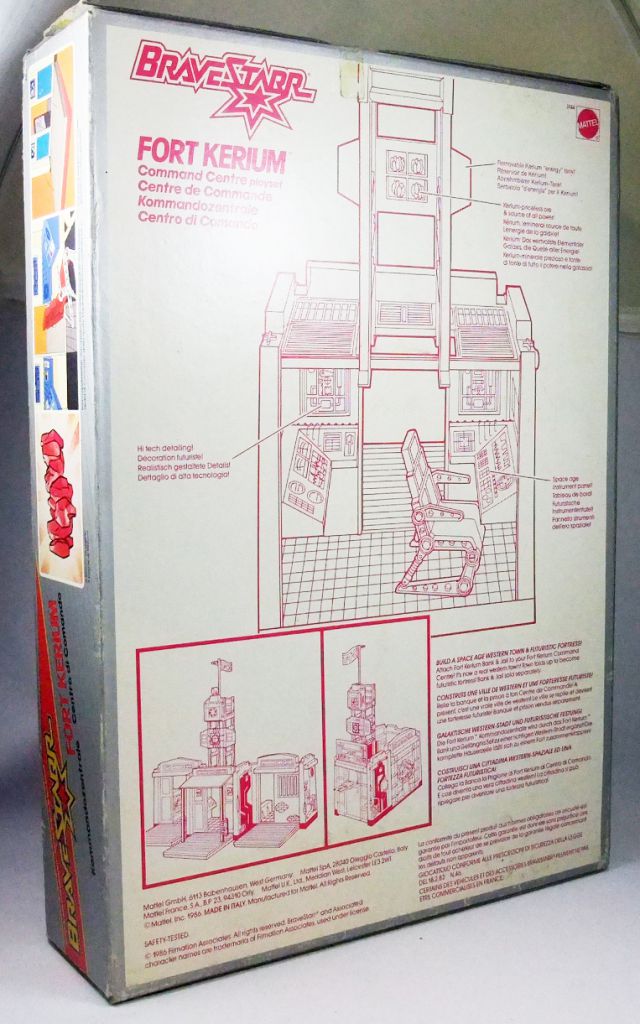
The army's Electronic Proving Ground opened in 1954, followed by the Army Security Agency Test and Evaluation Center in 1960, the Combat Surveillance and Target Acquisition Training Command in 1964, and the Electronic Warfare School in 1966. It was the beginning of a new era for this one time cavalry outpost, which saw Huachuca focused on electronic warfare. On 1 February 1954, Huachuca was reactivated after a seven-month shut-down following the Korean War. The Big Picture, Electronic Proving Grounds, Fort Huachuca, c. The 92nd and 93rd Infantry Divisions, composed of African-American troops, trained at Huachuca. With the build-up during World War II, the fort had an area of 71,253 acres (288.35 km 2), with quarters for 1,251 officers and 24,437 enlisted soldiers. In 1933, the 25th Infantry Regiment replaced the 10th Cavalry at the fort. From 1916–1917, the base was commanded by Charles Young, the first African American to be promoted to colonel. During General Pershing's failed Punitive Expedition of 1916–1917, he used the fort as a forward logistics and supply base. In 1913, the fort became the base for the " Buffalo Soldiers", the 10th Cavalry Regiment composed of African Americans. After the surrender of Geronimo in 1886, the Apache threat was extinguished, but the army continued to operate Fort Huachuca due to its strategic border position. Miles commanded Fort Huachuca as his headquarters in his campaign against Geronimo in 1886.

Sierra Vista, which annexed the post in 1971, is south and east of the post, and Huachuca City is to the north and east. The aerostat is northeast of Garden Canyon and supports the DEA drug interdiction mission by detecting low-flying aircraft attempting to enter the United States from Mexico.įort Huachuca contains the Western Division of the Advanced Airlift Tactics Training Center (AATTC) which is based at the 139th Airlift Wing, Rosecrans Air National Guard Base, Saint Joseph, Missouri.
#Forts game comanders series#
The fort has a radar-equipped aerostat, one of a series maintained for the Drug Enforcement Administration by Harris Corporation. Other units include the Joint Interoperability Test Command (JITC), the Information Systems Engineering Command (ISEC), the Electronic Proving Ground (EPG), and the Intelligence and Electronic Warfare Directorate (IEWTD). It was an alternate landing location for the space shuttle, but it has never been used as such.įort Huachuca is also the headquarters of Army Military Auxiliary Radio System (MARS). Libby Army Airfield is on post and shares its runway with Sierra Vista Municipal Airport. The major tenant units are the United States Army Network Enterprise Technology Command (NETCOM) and the United States Army Intelligence Center (USAICoE). Fort Huachuca has over 18,000 people on post during the peak working hours of 07:00 and 16:00 on weekdays. In the 2010 census, Fort Huachuca had a population of about 6,500 active duty soldiers, 7,400 military family members, and 5,000 civilian employees. During the build-up of World War II, the fort had quarters for more than 25,000 male soldiers and hundreds of WACs.

From 1913 to 1933, the fort was the base for the " Buffalo Soldiers" of the 10th Cavalry Regiment. It is in Cochise County, in southeast Arizona, approximately 15 miles (24 km) north of the border with Mexico and at the northern end of the Huachuca Mountains, adjacent to the town of Sierra Vista. The garrison is now under the command of the United States Army Installation Management Command. Fort Huachuca is a United States Army installation, established on 3 March 1877 as Camp Huachuca.


 0 kommentar(er)
0 kommentar(er)
